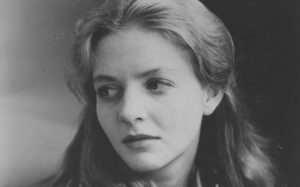 |
| Mia Farrow is having a tough trimester in Rosemary's Baby |
After the umpteenth time of watching poor Mia Farrow find out what was really behind her linen closet, I got to wondering about the source material. A trip to the library resulted in a bag full of Ira Levin thrillers:
Rosemary's Baby (1967)
While reading this thriller I was surprised to discover that pages of word-for-word dialogue made its way into the film version. This book is as tightly, subtly plotted as the film. Book Rosemary may seem slightly more naive than Movie Rosemary, and the sinister characters a bit more sinister. But there is also quite a bit of humor in it, too. And it was and still is absolutely brilliant of Levin to take the state of being newly wed and newly pregnant and turn that into horror, with its built-in nine-months of build-up. I really enjoyed this book, maybe appreciated it even more when I knew what was happening between the lines.
Son of Rosemary (1997)
Levin wrote this sequel decades after Rosemary's Baby. It starts off with Rosemary waking up from a coma, which she fell into in 1973. She soon reunites with her now 32 year-old son Damien, I mean, Adrian, I mean Andy - and it goes downhill from there. Rosemary doesn't exhibit nearly enough awe or interest in how things have changed in the 30-odd years she's been comatose, not to mention how she's up and at 'em in record time with no physical side-effects, except shock at her reflection in the mirror, which reminds her of her 50-something year old aunt. To make matters worse, there is absolutely no suspense or any surprises in this book. If you can't predict just about every turn the plot takes, then I have a bridge in Brooklyn that I can get for you real cheap ...
The Stepford Wives (1972)
This book was definitely a palate cleanser after Son of Rosemary. It is another cult classic, which has generated movie adaptations good (starring Katharine Ross) and bad (Staring Nicole Kidman). NOt to mention countless mediocre TV movie adaptations featuring Stepford wives, husbands and children. It is very similar to Rosemary's Baby in that it has a female protagonist, Joanna, who finds that certain conventions that she has taken for granted (marriage, life in the suburbs) may not be all that they seem. You have to hand it to Levin, whose book has coined a term that we are now all familiar with, a Stepford wife, and the scary perfection that term implies. But I still think readers will be surprised and horrified when they read about Joanna's life in Stepford, and interested to discover how deeply entwined this book was with the Women's Lib movement of the time. The Stepford Wives is a thriller and a relatively quick read, but its story has echoes which are eerily reminiscent of some of the "let's go back to the good old days" rhetoric that is being spewed today.
Sliver (1991)
Sliver is a very creepy book. It is not in the same league as Rosemary' Baby or The Stepford Wives, but it is just as tuned in to its time as they were. It features another female lead, New Yorker and book editor Kay Norris, who after two bad break-ups moves uptown with her amazing cat Felice into a huge, new, shiny, silver building, a "sliver." What she and the hundreds of other tenants don't know and we find out from the first sentence (so no spoilers) is that they are being watched, recorded, and taped, 24-7, by the building's owner. Ick. The book is set up as a murder mystery, but the real suspense is not so much whether Kay will find out who is behind the snooping and/or the killing, but what she will feel or do about it/them when she finds out. This book was written before cell phones or smart phones were a part of our daily lives, and reality television the norm. The intrusiveness of the Peeping Tom and his justification for spying on his tenants - It's so real and it can't hurt them if they don't know you're watching - has real echoes for our current obsession with screens and over-sharing and reality television. It's also got a ridiculously implausible ending, but readers might find its predictions of the Big Brother era we now seem to have no trouble inhabiting, interesting.
Ira Levin didn't write many novels. What he did write has proved fodder for many films on the large and small screen. I don't have any interest in trying The Boys from Brazil, but the two others, A Kiss Before Dying (his first, written in 1953) and The Perfect Day (1970) are still out there, waiting to be read. My local library has his play Deathtrap, too, so that could be fun.







